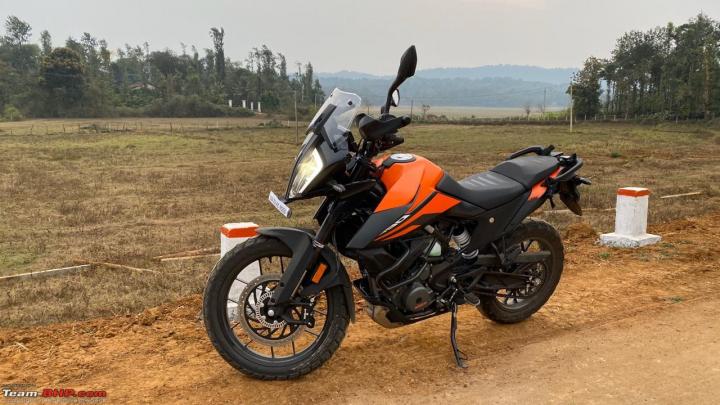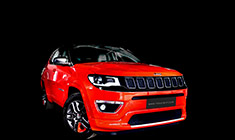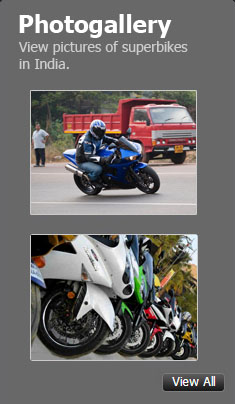News
Which bike for mountain touring: The heavy Enfields or the lighter KTMs
I mainly have in mind a comparison between the RE motorcycles—in particular, the Classic 350 and the much lighter KTM 390.
BHPian 2wheelsvaga recently shared this with other enthusiasts.
Hi all. I’m looking to hear your experiences of touring in the mountains (with saddle bags and a pillion) on different weight categories of motorcycles.
I’ve been hearing contrasting views when it comes to choosing between a lighter or heavier motorcycle for touring purposes (especially in the mountains). I mainly have in mind a comparison between the RE motorcycles—in particular, the Classic 350 (Std Bullet, Himalayan)—and the much lighter KTM 390. On the one hand, it seems a 195 kg RE will do a better job of being stable at highway speeds with a full load. But then isn’t this going to be detriment on the broken roads or twisting turns of the Himalayas? On the other hand, a lighter bike should be much more easier to handle on the mountain twisties, or so it seems. But won’t it get bounced around much more than the heavier bike, making for an overall more fatiguing experience?
If you have been to the mountains or done a good bit of highway touring on both these bes, then do share your personal experiences. Thanks!
Here's what BHPian SidharthaN had to say on the matter:
I have done mountain touring on a RE Thunderbird and and XPulse 4v. Both are around 18bhp, but the difference in torque is felt.
On straight tarmac highways the Thunderbird sits at 80 all day long with tons of luggage, no issues. The Xpulse also sits at 80 but with a higher rpm range and engine working lesser torque.
Crosswinds on tarmac highways do not unsettle the TB, Xpulse does get effected a bit.
On tarmac mountains the difference in torque is felt. The TB just chugs along, Xpulse needs to be worked through the gears.
On off-road, bad patches this is where the Xpulse suspension shines and one makes quick progress. The TB trundles through but the rider is jolted around. And yes weight is definately felt in manouervering.The XPulse is just so convenient. And God forbid if there is a fall the RE will be a difficult ball game to pick in comparison to the XPulse.
I am strictly talking one up touring. For two up, on YouTube was watching a Nepali guy Biker Haru who was doing Mustang with a pillion, you can check. Two up RE is better with luggage, you need to keep it slow.
I am doing Dharamkot in May and will have a pillion join there in the hills, will see how the Xpulse performs.
Here's what BHPian sandeepmohan had to say on the matter:
The Himalayan is my pick. I have not owned one though. Just a brief test ride which was enough to understand the capabilities of the motorcycle. The engine is lazy but can tour all day around 90-95Kmph. Anything more than this isn't its comfort zone. When it comes to seat comfort, riding posture and luggage carrying capabilities, the Himalayan has no competition. The only reason you'd not want a Himalayan is if you are challenged by the seat height and you end up tip toeing.
I did own a 390 Duke. You can tour on it, with a lot of compromises. Its a cramped ride and seat comfort can be punishing over longer distances. While I have seen many stash a whole lot of luggage on a 390 and modifying every nut and bolt to make it compatible, this bike isn't designed for going off road or on mountain trails. This is a bike with a potent engine and best suited for on road use. The 390 Adventure might be better but its still a compact motorcycle.
Weight is subjective. Some like the feel of a heavy motorcycle and some prefer light. That said, I have seen motorcycles like the Honda CRF300 make a laughing stock out of some of the bigger 1000cc Adventure machines. It is so nimble and agile.
Here's what BHPian VijayAnand1 had to say on the matter:
Let me add in a few cents worth, staring with the light bikes/heavy bikes.
A light bike is one that's equal too or lesser than 150 kgs kerb, and middleweight are the ones that weight above 170 not exceeding 180. Bikes exceeding 190 and more, kerb, are considered heavy.
A heavy bike in any case, is always a trouble when stranded or for that matter the rider getting himself in tight situations. Case in point almost all the RE bikes. Stability doesn't ultimately come from the vehicle being heavy. Stability comes for varied yet crucial important engineering aspects at play. A heavy bike designed poorly with poor tires and poor weight distribution, brakes etc will still be unnerving to ride as opposed to a lighter to medium weighing motorcycle that has its dynamics and stability factors sorted well.
RE's are heavy and they don't have good handling characteristics. In most cases, their own weight end up as detriments rather than merits. The ADV390 is a middle-weight bike with good enough handling, braking, and excellent chassis dynamics, yet not too heavy that it rests itself inside a grotto.
Key takeaways here are.
Weight doesn't necessarily mean a stable motorcycle and light doesn't necessary mean it's not sure footed one either. One of my primary reasons for me selling the Himalayan was it own weight coupled coupled with not too much great a build quality.
Ride the bikes you've wanted to feel, and then make an informed decision.
Here's what BHPian Suresh_Stephen had to say on the matter:
In the past close to 40 years, I have been touring around this country,also to Nepal and Bhutan with Yezdis, Rx 100, a Vintage Bullet 350, for some time a Royal Enfield interceptor and now a Himalayan. Most of my travel was with a fully loaded bike and some times with my wife also.
Among the bikes I have listed above, Himalayan was the most comfortable for long touring including mountains and extremely bad roads with a pillion and fully loaded. But it is heavy when fully loaded. If the bike fall in a good road, though it is a handful, it can be lifted by a single person, But if it falls in a very bad terrain, it can be a pain to lift it up
Yezdi 250 was a light and very handy bike , Rx 100 was like a toy, Extremely reliable and no nonsense bike, My Bullet 350 ( 70 model) was a delight, but a pain to maintain.
If you are travelling alone, It may be wiser to go for a lighter bike like Xpulse or Vstrom 250. Again, if you are not looking at pushing your bike in extreme roads like Annapurna trail in Nepal, A good Standard Royal Enfield 350 is very comfortable to carry your luggage and pillion. Also though it is almost as heavy as Himalayan, because of better weight distribution, it is lot more easier to lift up , in case it falls. For that matter, interceptor is also not a bad option.
Here's what BHPian nitro.1000hp had to say on the matter:
If you are riding on we'll tarmaced mountain roads then nothing comes close to a duke 390 for sheer smiles per miles but if the roads are bad or non existent then the Duke will become painful to ride with it's limited suspension travel and hard ride.
The classics and old 350/500 bullets stamped their authority on the Himalayas mainly because of their higher torque engines and simplicity of maintenance. As one climbed to higher altitude the low torque, high revving 125/1500cc bikes that were the norm during the last decade were woefully underpowered up there as you may know that higher one climbed the lower the oxygen level and therefore the engine made proportionally lower power/torque. It was ok if you travelled solo and packed light but the bullets could chug along and climb all day with a kitchen sink and a pillion tied to the back . It also helped that everything was made of steel when if something broke it could be welded back on.
The Himalayan was conceived to be a mountain goat by design right from the start and it is fundamentally better than a classic/bullet on bad roads and the high torque engines made sure you could climb at altitude with minimal effort. A friend recently took an xpulse up to uttarakhand and he was highly disappointed with the power. He said it felt like a 100cc up there and had to really ring its neck to make it climb some of the high passes. He said it was even dangerous at times since he had to carry more speeds in the corners in order to climb the inclines that followed afterwards.
To conclude, it really depends on the altitude and condition of the road to pick the right bike for the intended ride. If you can only afford one, the Himalayan is it.
Read BHPian comments for more insights and information.



















